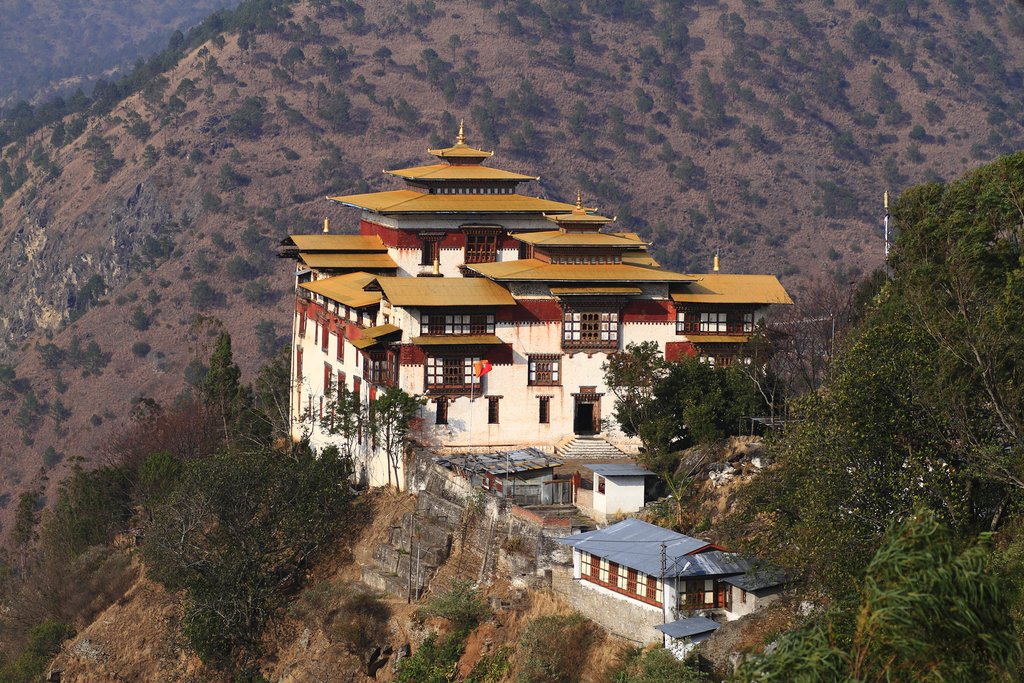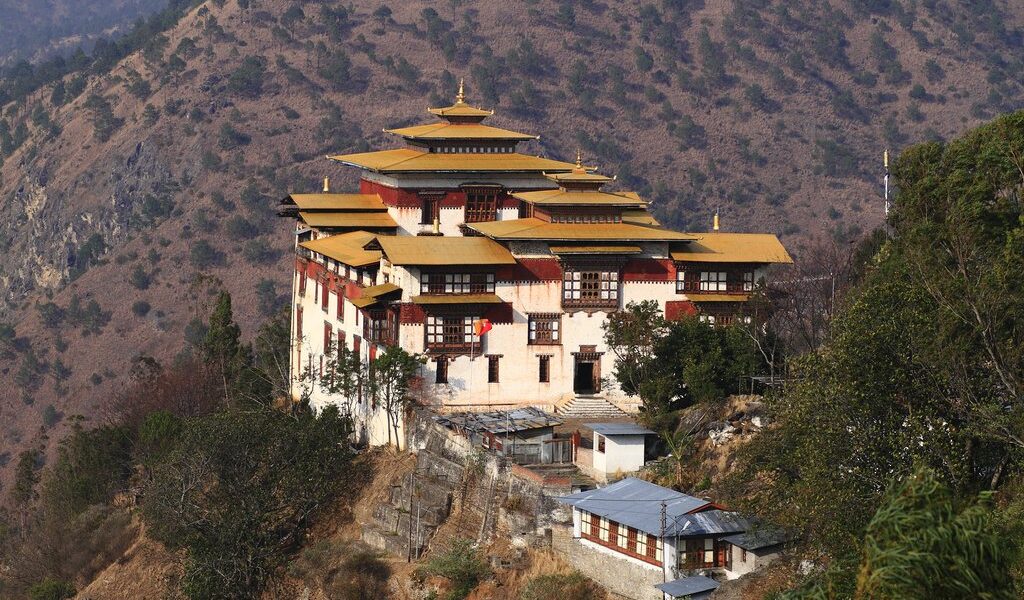
January is right in the middle of Bhutan’s low season due to its cooler (sometimes very cold!) temperatures. But, if you really want to visit in January you’ll pay lower prices, will have your pick of the country’s wonderful accommodation, and can enjoy clear skies and mountain views. Here are some important things to know about traveling to Bhutan in January.
January in Bhutan offers a unique travel experience, characterized by the cool embrace of mid-winter. During this time, temperatures fluctuate from comfortably cool to undeniably cold, creating a distinct atmosphere throughout the kingdom. The determining factor in just how chilly a particular location becomes is largely dependent on its altitude. While Bhutan is renowned for its mountainous terrain and elevated landscapes, the country also encompasses lower-lying regions that enjoy a more temperate climate.
The southern reaches of Bhutan, bordering India, present a stark contrast to the higher altitudes. Here, the climate mirrors that of North India, offering a warmer and more humid environment. For example, the area surrounding the magnificent Royal Manas National Park benefits from this more moderate climate, making it a particularly appealing destination during the Bhutanese winter.
To illustrate the temperature variations across Bhutan in January, let’s consider a few specific locations. The town of Gelephu, situated at a lower altitude, experiences average temperatures ranging from a pleasant 50 to 73° F (10 to 23° C). This makes it a comfortable place to explore, especially during the daytime.
However, most of the sites that draw travelers to Bhutan are located at higher elevations. The picturesque town of Punakha, nestled at around 5000 feet (1500 meters), sees January temperatures hovering between 41 and 63° F (5 and 17° C). While still manageable, visitors should be prepared for cooler conditions, particularly in the evenings and early mornings.
The capital city, Thimphu, commands an even more elevated position, perched at approximately 6500 feet (2000 meters). Here, January temperatures can dip to between 27 and 54° F (-3 and 12° C). This significant drop in temperature necessitates warmer clothing and appropriate preparation for the colder climate.
Despite the potential for cold weather, January in Bhutan offers a significant advantage: consistently clear skies. This creates ideal conditions for breathtaking mountain views, allowing visitors to fully appreciate the stunning natural beauty of the Himalayan landscape. The crisp, clear air enhances visibility, making it a photographer’s dream and a nature lover’s paradise.
Moreover, the winter months, including January, represent the low season for tourism in Bhutan. This translates to fewer crowds at popular attractions, creating a more intimate and immersive experience for travelers. The reduced number of visitors also means lower prices for tours and lodging, making a trip to Bhutan in January a more budget-friendly option. It’s possible to find exceptional deals on accommodations, even at some of Bhutan’s renowned boutique and luxury establishments.
For those interested in experiencing Bhutan’s diverse wildlife and lush jungle landscapes, winter provides an optimal time to visit the low-altitude Royal Manas National Park. Situated between 200 and 360 feet above sea level, this park offers a much warmer climate than most other points of interest in Bhutan. Here, visitors have the chance to spot magnificent creatures such as tigers, rhinos, elephants, and elusive leopards in their natural habitat. Wildlife enthusiasts will find January an excellent time for sightings.
While trekking at higher altitudes is generally not recommended in mid-winter due to icy conditions and potential snowfall, shorter hikes and walks remain a viable option. The clear skies and panoramic mountain views make winter an ideal time to immerse yourself in nature, provided you avoid very high-altitude routes or overnight camping. One excellent option is the Punakha Winter Trek, which meanders through charming villages, dense forests, and picturesque farmland, without reaching excessively high altitudes.
Beyond trekking, general touring is also highly recommended in January. Days can be spent exploring Bhutan’s iconic temples, majestic palaces, and ancient monasteries, such as the awe-inspiring Tiger’s Nest Monastery and the magnificent Punakha Dzong. After a day of exploration, travelers can retreat to the warmth and comfort of their chosen accommodation.
Regardless of the type of accommodation, visitors should not miss the opportunity to indulge in a traditional hot stone bath. These therapeutic baths, often available for a nominal fee, offer a soothing and rejuvenating experience after a day of exploring in the cool winter air.
January also offers a unique cultural experience with the Sarpang Tsechu. This vibrant masked dance festival, held in the courtyard of the Tali Dratshang Monastery in the southern town of Gelephu, typically takes place in late January. The festival provides a captivating glimpse into Bhutanese traditions and religious practices.
The Bhutan Highlights: Thimphu, Punakha, and Paro – 6 Days itinerary presents the must-see locations without going into higher altitudes.
Visit the iconic Tiger’s Nest Monastery, marvel at the beauty of the Paro Valley, and immerse yourself in Bhutanese culture during a week-long adventure by using the Bhutan Highlights – 7 Days itinerary.
B-157

